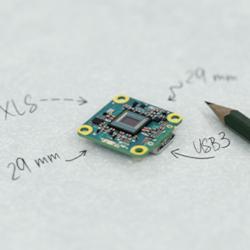This Swiss innovation makes possible to achieve higher yields with drastically reduced consumption of water, of fertilizer and of energy, and thus can make a substantial contribution to the food security of the world. As the predicted market volume for the sensor is huge, PlantCare Ltd. seeks strategic partners to utilize it.
Swiss Company PlantCare Makes Breakthrough in Digital Farming
Contributed by | PlantCare AG
Can you imagine being able to determine the fertilizer content in the soil without taking samples and then having to have them analyzed in a chemical laboratory? PlantCare Ltd., a company based in Switzerland in the field of soil sensors and intelligent self-learning irrigation controls, has succeeded to enable exactly this. Agriculture has been waiting for this innovation for decades.
.jpg)
The revolutionary new sensor concept eliminates the time and expense of sampling in the field, transporting to an appropriate laboratory, sample preparation and analysis, and returning the information to the farmer. Moreover, it makes possible the implementation of automated online control circuits. This minimizes fertilizer use and prevents its leaching into groundwater, while increasing yield and reducing costs.
.jpg)
The sensor is based on the soil moisture sensor invented by PlantCare in 2005, which is now used worldwide to control irrigation in the agricultural, home and garden sectors. Many universities and agricultural research institutes have been using PlantCare sensors for years as well. Comparative studies have shown that the developed and patented control algorithm can increase the water efficiency by a factor of 2-3. The sensor can remain permanently in the ground and transmits the measured data wirelessly over an IoT net to a server or to a local control center, where they can be used for large area monitoring of soil data (big-data) and also for the automatic control of irrigation and for precisely dosed fertilization. In addition to the total fertilizer content, the sensor can measure the content of nitrogen, potash and the pH value. It is to be expected that in the future also micro nutrients, as well as residues of pesticides can be determined locally and at any time.
Further advantages of the sensor are:
- Low energy consumption: With two conventional AA batteries, the sensor can operate for a full year.
- Small design: The sensor can be placed in the field within seconds.
- Fast response time: Changes in soil moisture or fertilizer concentration are detected within a few seconds.
- Low production costs.
This Swiss innovation makes possible to achieve higher yields with drastically reduced consumption of water, of fertilizer and of energy, and thus can make a substantial contribution to the food security of the world. As the predicted market volume for the sensor is huge, PlantCare Ltd. seeks strategic partners to utilize it.
The content & opinions in this article are the author’s and do not necessarily represent the views of AgriTechTomorrow
Comments (0)
This post does not have any comments. Be the first to leave a comment below.
Featured Product


